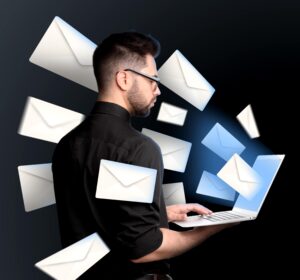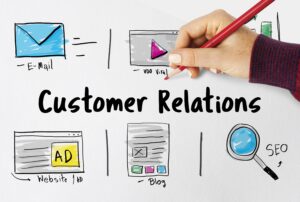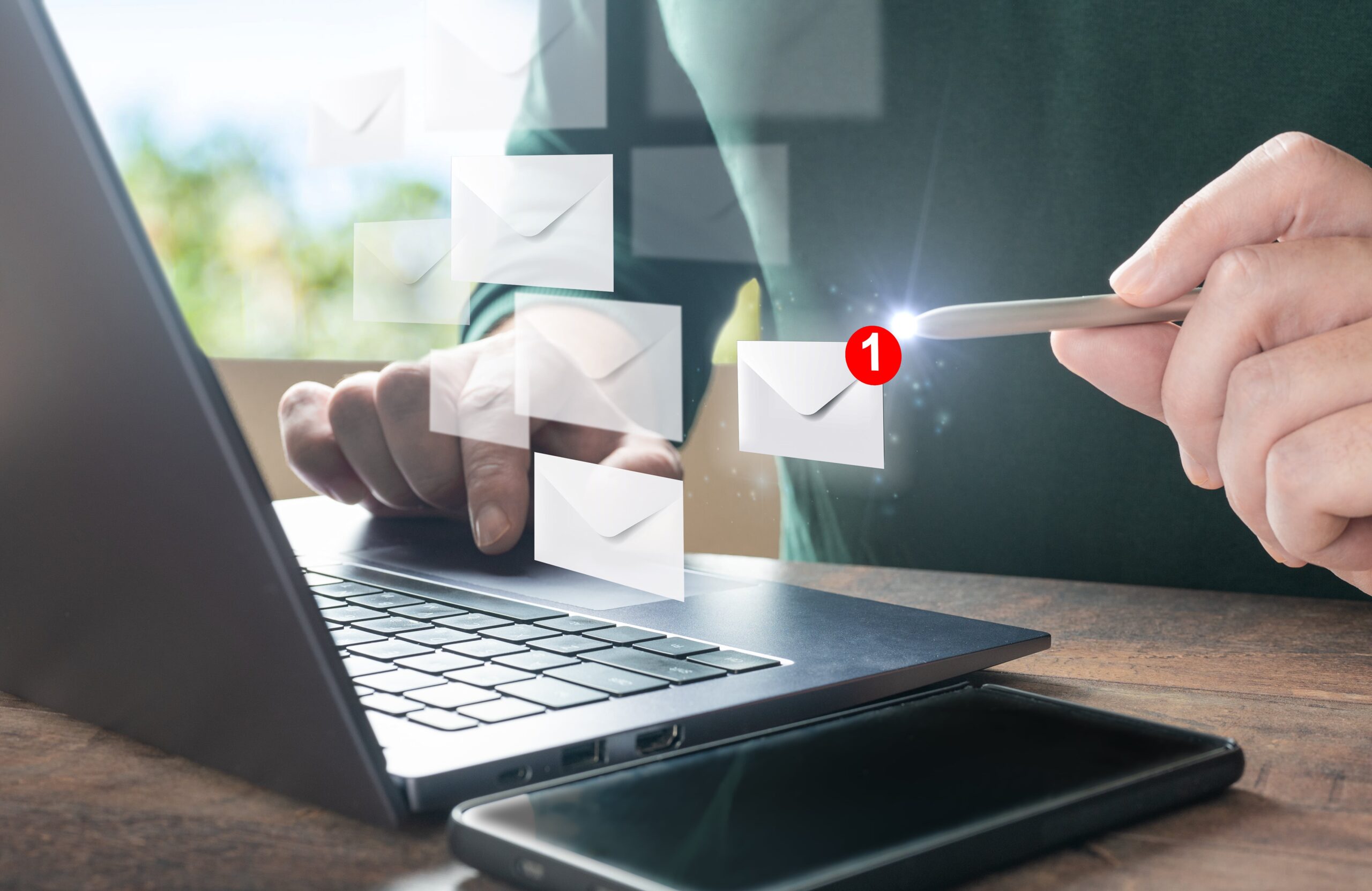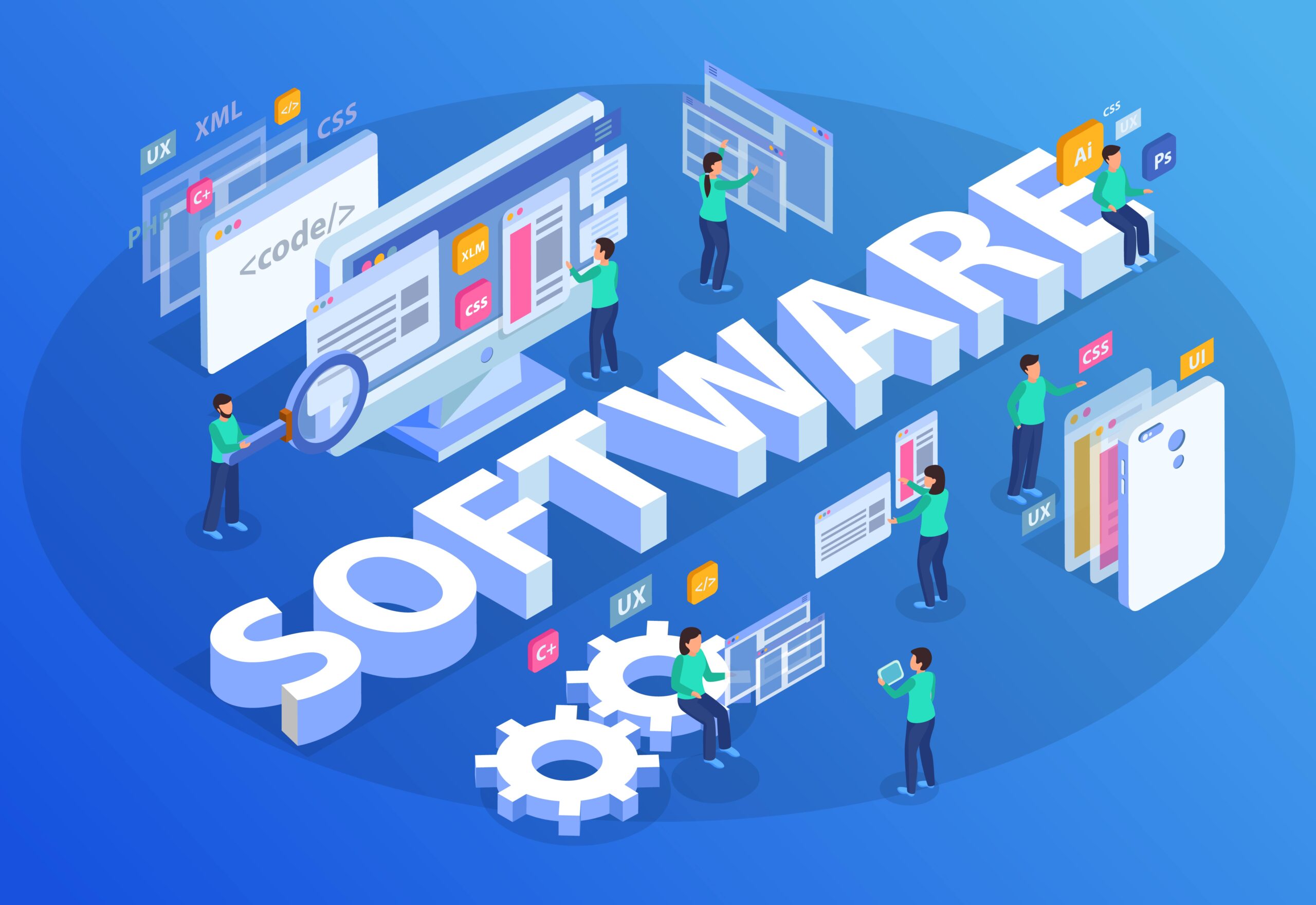Secure Your Inbox: Email Authentication Standards Explained
Email authentication standards are not just tech jargon; they’re your frontline defense in the digital world. Yahoo’s dedication to email integrity means you get the emails you want and ditch the dangerous ones. This piece will guide you through their efforts, from Sender Hub guidelines to upcoming security enhancements.
Learn how sender validation shields against cyber threats and why it matters for everyone using email today. Bulk senders face unique challenges, but we’ll show what pitfalls to avoid and how enhanced measures can make a global impact.
We also touch on collaborative industry strides towards safer messaging with insights from giants like Google, plus tips on leveraging Yahoo’s postmaster resources for top-notch delivery strategies.
Table Of Contents:
- Yahoo’s Commitment to Email Integrity
- The Importance of Sender Validation
- Challenges Faced by Bulk Senders
- The Evolution of Email Security Measures
- The Global Impact of Enhanced Email Authentication
- Collaborative Efforts Towards a Safer Email Ecosystem
- Seeking Assistance from Yahoo’s Postmaster Teams
- Conclusion

Yahoo’s Commitment to Email Integrity
Email has evolved into a crucial artery of communication, pulsing with information vital for personal connections and business operations alike. Yet, as much as we rely on it, the influx of spam and malicious content threatens to clog this essential channel. Yahoo knows this all too well and is committed like a steadfast guardian to keeping our inboxes clean while ensuring that every legitimate message reaches its destination.
The Role of Yahoo’s Sender Hub
In their quest to safeguard email integrity, Yahoo set up the Sender Hub—a lighthouse guiding ships through foggy waters—providing guidelines so senders can navigate best practices without running aground. It’s not just about sending emails; it’s about delivering messages people actually want to receive. With clear directives from Yahoo’s postmaster resources, businesses can ensure they’re hitting the mark each time they hit ‘send’.
To truly appreciate what’s at stake here, consider this: when an inbox is flooded with irrelevant or harmful content, trust erodes faster than sandcastles at high tide. But by following these best practices outlined by Yahoo—the diligent beach patrol—both senders and recipients can enjoy sunny days filled with wanted correspondence free from the debris of junk mail.
Authentication Standards as a Shield
Imagine if anyone could waltz into your private conversations pretending to be someone you trust—it’d be chaos. That’s where authentication standards come in like bouncers at an exclusive club—they make sure only those who are verified get past the velvet rope of your inbox. These standards act as both shield and sieve: blocking deceitful actors while letting through genuine communications.
This verification process isn’t just some arcane ritual practiced by IT shamans; it lies at the heart of system security concerns today DKIM (DomainKeys Identified Mail), SPF (Sender Policy Framework), and DMARC (Domain-based Message Authentication Reporting & Conformance). When done right, they guarantee that behind every sender address there stands someone accountable—an assurance akin to knowing there’s a real person standing behind their online dating profile picture.
The Evolution of Email Security Measures
We’ve witnessed remarkable strides in securing digital correspondences over recent years—and yet evolution never rests on its laurels. As we peer over the horizon toward Q1, it’s clear that staying ahead of emerging threats is as crucial as ever. The landscape of cyber security shifts constantly; this means vigilance and adaptation are key to protecting sensitive information.
Key Takeaway:
Yahoo is like a guardian, committed to keeping inboxes free of spam while making sure real messages get through. By following their Sender Hub guidelines and using authentication standards like DKIM, SPF, and DMARC, you can protect your inbox from imposters and make sure that every email is legit.

The Importance of Sender Validation
Think about sender validation like a bouncer at the club, checking IDs to make sure everyone’s legit. In email marketing, it’s just as important to know who’s behind those messages flooding your inbox. It keeps things safe and sound for both senders and receivers.
Domain Authentication
Email authentication standards are your digital superheroes in this story—they work tirelessly in the background making sure that an email claiming to be from “yourbank.com” is actually from your trusted bank and not some villainous imposter trying to swipe your data. This isn’t just geek talk; these standards seriously beef up system security by verifying the identity of anyone sending you emails.
If you’ve ever wondered why that pesky spam somehow sneaks into your mailbox while other times it’s caught red-handed by filters, here’s the scoop: emails passing through strong authentication checks get a green light straight to your inbox because they’re verified as safe. But when there’s no such stamp of approval? Into the junk folder they go—or better yet, blocked before even getting close.
This might seem like tech wizardry but think about it—when someone knocks on your door, don’t you want to peek through that peephole first? That’s exactly what email authentication does—it lets us take a good look at who’s knocking digitally so we can decide if we should open up or keep our doors locked tight against potential intruders.
To give credit where credit is due, DMARC (Domain-based Message Authentication Reporting & Conformance), along with its trusty sidekicks SPF (Sender Policy Framework) and DKIM (DomainKeys Identified Mail), form an unbeatable trio keeping impostors out of our digital neighborhoods.
But remember folks, great power comes with great responsibility—if you’re blasting out bulk emails without proper setup under these protocols then brace yourself. You might end up being labeled ‘untrustworthy’ faster than you can say “oops”. So do yourself—and all of us—a favor by ensuring every message has gone through rigorous ID checks before hitting send; let DMARC be the hero we need AND deserve.
Key Takeaway:
Think of email authentication like a club bouncer for your inbox, checking that senders are who they say they are. It’s not just tech talk; it’s about keeping you safe from impostors.
Email authentication standards such as DMARC, SPF, and DKIM act as digital superheroes. They verify emails to make sure the good ones get through and the bad ones don’t.
If you’re sending bulk emails, make sure they pass these checks with flying colors. Otherwise, you might quickly earn a rep for being untrustworthy—so let these protocols be your caped crusaders.

Challenges Faced by Bulk Senders
Bulk senders often find themselves in a high-stakes game of cat and mouse with cybercriminals. The reality is stark: without proper security measures, their systems can become playgrounds for these bad actors. What’s worse, many bulk senders don’t realize they’ve left the door wide open until it’s too late.
The Exploitation by Malicious Actors
It’s not just about sending emails en masse; it’s also about keeping your digital fortress secure. Cybercriminals are on the prowl for systems to hijack, and unfortunately, many bulk senders fail at this fundamental task. These oversight lapses allow shady characters to slip through undetected—a sobering thought that keeps email marketers up at night.
To illustrate, imagine you’re throwing a huge party—invites sent far and wide. Now picture forgetting to hire bouncers. Before you know it, uninvited guests crash your bash. Similarly, when an email system isn’t properly secured or set up right from the get-go—think missing authentication protocols—it becomes all too easy for impostors to gatecrash your campaign.
The consequence? Not only do spammers tarnish your brand name by using it as a disguise for nefarious deeds but such exploitation could lead ISPs (Internet Service Providers) like Yahoo or Gmail to blacklist your IP address, essentially slamming shut the doors of communication between you and your audience—the exact opposite of what any serious sender wants.

The Evolution of Email Security Measures
Think back to the Wild West, a time of lawlessness and bandits. Just as sheriffs were tasked with bringing order, Yahoo is upping its game in email security for bulk senders. By Q1 2024, it’s not just a hope but an expectation that all the big players will lock their digital doors tight with new standards.
Anticipating Changes in Q1 2024
In this brave new world where cyber outlaws lurk behind every click, staying ahead is key. Yahoo isn’t sitting on its hands; they’re drafting rules to make sure when you hit ‘send,’ your emails don’t end up in the spam folder or worse—impersonated by some no-good phisher.
You might be asking yourself what these changes mean for you as a bulk sender. It’s simple: adapt or get left behind with your emails gathering dust where nobody sees them.
To give you an edge against these unseen desperados of the digital age, Yahoo plans to demand strict adherence to authentication protocols from everyone sending large volumes of messages through their platform come early next year. Think about it like having VIP access—you’ve got your own secret handshake that tells mail servers “I’m legit.”
Email authentication methods are like bouncers at the club door; if they know who you are, great. If not… well, let’s just say there’ll be no dancing tonight—or ever again if things go south because once trust is lost online? Good luck getting that back without help.
- No more guessing games—it’s clear-cut identity verification from here on out,
- A move designed to stop bad actors dead in their tracks before they even reach for their phishing rods,
- An overall effort toward making cyberspace less wild and more civilized—at least where our inboxes are concerned.
Key Takeaway:
Yahoo’s new sheriff in town: strict email security for bulk senders. By early 2024, play by the rules or risk being ghosted in the digital dust.
Emails must pass the bouncer—authenticate or get bounced. It’s a no-dance zone without that VIP handshake.

The Global Impact of Enhanced Email Authentication
Email authentication is like a bouncer at the club door, keeping the riff-raff out. When messages are properly authenticated, it’s tougher for phishing scams and malware to slide into your inbox unnoticed. We’re talking about stopping billions of these nasty emails from reaching people worldwide.
It works because senders have to prove they’re legit before their messages hit our screens. Imagine if every email came with a virtual ID card that said “I’m really who I claim to be.” That’s what strict authentication measures do—they check those IDs.
This isn’t just good news for us as individuals; it’s great for businesses too. When customers trust you’ll only send safe emails, they’re more likely to open them and take action. So yeah, enhanced email authentication doesn’t just protect inboxes—it protects reputations and bottom lines.
Email Authentication Standards
You wouldn’t let someone into your house without knowing who they are first, right? Well, think of email authentication standards as the peephole on your digital front door. They make sure you know exactly who’s sending an email before letting it through.
Email sender verification: It’s essential not only for security but also for maintaining order amidst our daily flood of emails—ensuring that spam and phishing attempts don’t get mixed up with important stuff like work communications or newsletters we actually want to read.
The Exploitation by Malicious Actors
Cybercriminals love nothing more than finding an unguarded gate where they can slip in undetected—and many bulk senders leave their gates wide open due to poor setup or lax security practices. But when everyone plays by tough authentication rules, these bad actors find fewer opportunities to wreak havoc using stolen identities or compromised accounts.
Anticipating Changes in Q1 2024
We’ve got changes coming down the pipeline soon: Yahoo plans on tightening its grip even further come Q1 2024. This means all bulk senders need to sharpen up their act now if they want their emails seen rather than sent straight into oblivion (or worse—the spam folder).
Collaborative Efforts Towards a Safer Email Ecosystem
Better yet? Big players like Google aren’t going solo; there’s real teamwork happening here toward safer emailing across platforms which translates into less junk clogging up our digital space overall.
Key Takeaway:
Email authentication acts like a club bouncer for your inbox, blocking scams and boosting trust in business communications. It’s the digital peephole ensuring you only get emails from verified senders, which is crucial as Yahoo tightens security and big tech teams up for a safer email world.

Collaborative Efforts Towards a Safer Email Ecosystem
Email security is no joke. Like knights of the digital realm, major industry players are banding together to bolster our defenses against unwanted messages and email threats. Google, with its vast kingdom of users, has been vocal about their quest for stronger barriers in this ongoing battle.
Why should you care? Because every day, countless emails bombard your inbox—some good, some bad—and distinguishing between them can be like finding a needle in a haystack. It’s not just about avoiding annoyance; it’s also about keeping your digital life safe from harm’s reach.
The Role of Yahoo’s Sender Hub
Yahoo, another titan on the battlefield, wields its Sender Hub as both shield and sword to help ensure only the worthy messages make it through to your inbox. They lay down best practices for sending emails that aim at delivering what you want while filtering out what you don’t.
If there was ever an unsung hero in our daily communication rituals—it would be these standards that Yahoo upholds relentlessly behind the scenes.
The Importance of Sender Validation
In today’s world where anyone can claim to be someone they’re not online (we’re looking at you ‘Nigerian princes’), validating senders’ identities becomes more than important—it’s critical. Authentication standards serve as our invisible guardians verifying who really stands behind each message sent your way. Think Spartans defending their gates; without them chaos ensues.
The Evolution of Email Security Measures
Come 2024—things are going big. Yahoo plans on beefing up requirements for bulk senders faster than spinach does Popeye’s biceps. The upcoming year spells change with new mandates set by these internet stewards ensuring everyone plays by the rules or gets benched—in other words: No authentication? No entry.
The Global Impact of Enhanced Email Authentication
This isn’t just small talk—the ripple effect is huge. When we nail email authentication right globally billions (yes, billions) of shady messages get stopped dead in their tracks before reaching any unsuspecting victim across continents. Imagine if those were zombies instead—that’d be quite something wouldn’t it?
Seeking Assistance from Yahoo’s Postmaster Teams
We’ve all been there – feeling lost trying to navigate complex systems, but fear not because Yahoo’s postmaster teams are here for you. They’re the wizards behind the curtain, making sure your emails reach their destination without a hitch. Whether it’s sorting out delivery issues or just offering guidance through Yahoo’s email intricacies, they’ve got your back every step of the way.
Key Takeaway:
Email security is serious business, and tech giants like Google and Yahoo are on a mission to keep your inbox safe. They’re constantly updating their tools to block spam and protect you from online threats.
Yahoo’s Sender Hub acts as a gatekeeper, using strict email standards to let in only the good stuff. By 2024, they’ll turn up the heat even more on senders who don’t follow the rules—no authentication means no entry.
Getting sender validation right has global perks; it stops billions of sketchy emails worldwide. And if you ever feel lost in email land, Yahoo’s postmaster team is ready to guide you through with expert help.

Seeking Assistance from Yahoo’s Postmaster Teams
If you’re in the email game, sending out messages en masse, then knowing how to play by the rules can make or break your strategy. But sometimes it feels like you need a secret decoder ring just to understand what those rules are. Enter Yahoo’s postmaster teams—your guides through the maze of optimal email delivery.
Utilizing Resources for Optimal Email Delivery
Gone are the days when “spray and pray” was an acceptable approach to bulk emailing. Today, smart senders tap into Yahoo’s resources designed specifically for them. Think of these tools as your personal navigation system steering you away from spam filters and straight into inboxes where you belong.
Better delivery rates don’t happen by accident; they’re a result of hard work and paying attention to feedback—that’s why touching base with Yahoo’s team is such a power move. They give insider insights that could take your sender reputation from zero to hero faster than you can say “You’ve got mail.” And trust me, once your emails consistently hit that sweet inbox spot? It feels like winning gold at the Email Olympics.
The stats back up this no-brainer strategy: senders who use Yahoo’s guidelines not only keep their heads above water but swim laps around competitors struggling without support. Why try reinventing the wheel when there are already paved roads leading right where we want our emails—to readers eagerly awaiting our next message?
Conclusion
So, email authentication standards for secure messaging are your digital armor. Remember, they’re essential. They keep the good stuff in and the bad stuff out.
You’ve seen how Yahoo is pushing forward, setting up defenses to shield us all from cyber threats. This isn’t just their fight; it’s ours too.
Bulk senders take note: pitfalls abound but can be dodged with smart strategies and sharper security measures that are coming soon.
We’re not alone in this battle for a safer inbox. Big names like Google stand with us, striving for fewer unwanted messages clogging our day-to-day life.
Last thing—reach out when you need help fine-tuning your approach to email delivery because winning at email means staying ahead of troublemakers every step of the way.












